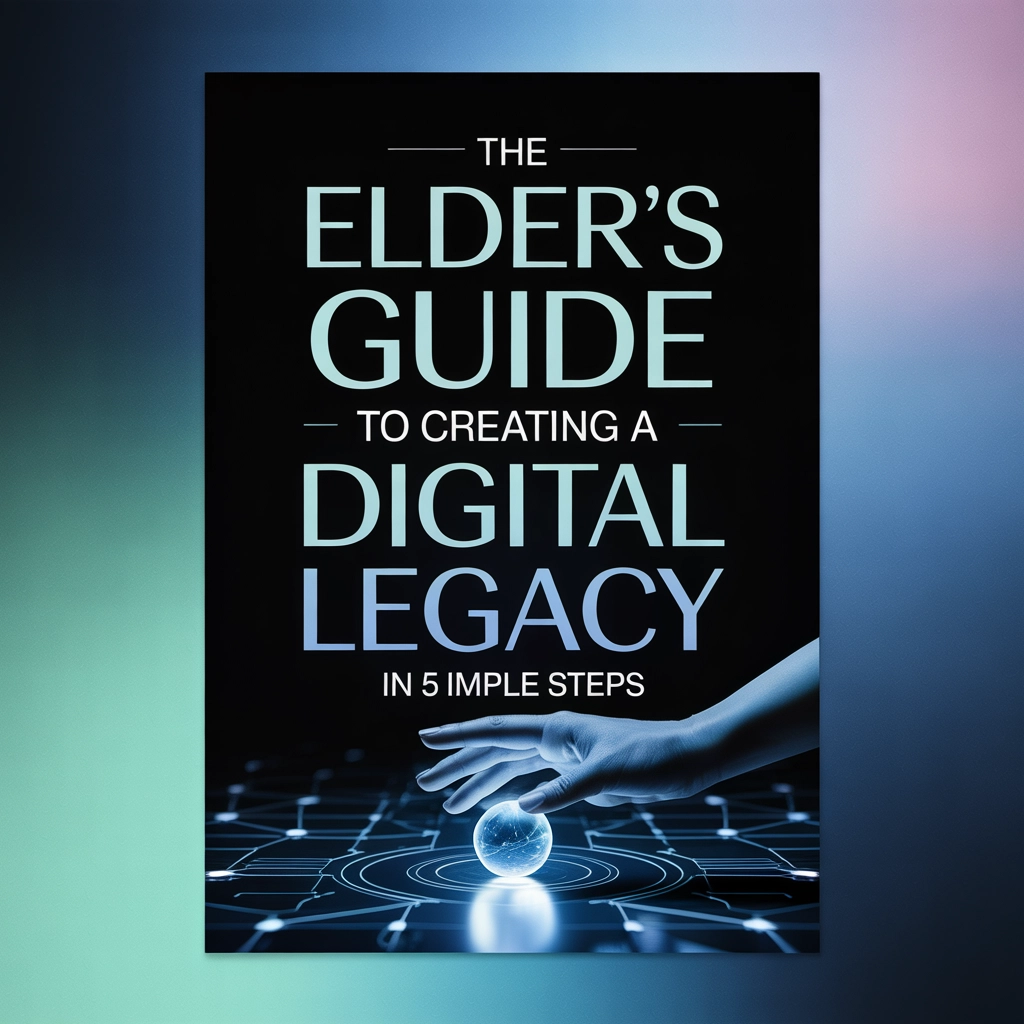
The Elder's Guide to Creating a Digital Legacy in 5 Simple Steps

In our interconnected world, the wisdom and memories we accumulate throughout our lives extend far beyond physical possessions. Our digital footprints: spanning decades of emails, cherished photographs, important documents, and online accounts: represent an invaluable heritage that deserves the same thoughtful preservation as any family heirloom. Yet many elders find themselves uncertain about how to safeguard these digital treasures for future generations.
Creating a digital legacy isn't just about technology; it's about ensuring your life's work, memories, and wisdom remain accessible to those you love. This comprehensive guide empowers you to take control of your digital heritage through five manageable steps, honoring both your accumulated wisdom and your family's future needs.

Step 1: Create Your Digital Asset Inventory
The journey toward preserving your digital legacy begins with understanding what you possess. This comprehensive inventory process serves as the foundation for all future decisions about your online presence and digital possessions.
Begin by settling comfortably at your computer or device and opening a simple document or notebook. Start with the obvious accounts: your primary email, banking websites, and social media platforms you use regularly. Then, explore deeper into your digital world by examining your browser's bookmarks and saved passwords, which often reveal forgotten accounts from years past.
Your digital assets encompass far more than you might initially consider. Include subscription services like Netflix or newspapers, online shopping accounts, cloud storage services, digital photo libraries, e-books, music collections, and even loyalty program memberships. Don't overlook smartphone applications, digital wallets, or cryptocurrency accounts if you have them.
Consider using a password manager to securely compile this information. These tools not only help organize your accounts but also store the vital login credentials your loved ones will need. Remember, this inventory doesn't need perfection on the first attempt: you can continuously refine your digital estate plan as you discover additional accounts or create new ones.
Step 2: Define Your Digital Wishes
Once you've cataloged your digital possessions, the next crucial step involves deciding the fate of each account and digital asset. This decision-making process requires thoughtful consideration of both practical and sentimental value.
For social media accounts, you might choose memorialization, allowing family members to continue visiting and sharing memories on your profile. Email accounts often contain decades of important correspondence: consider which messages hold historical or emotional significance for your family. Some emails might contain family recipes, important advice you've given, or correspondence with loved ones that could comfort them after you're gone.

Financial accounts typically require closure after transferring funds to designated beneficiaries. However, maintain detailed records of these accounts to ensure nothing gets overlooked during the transition process. Subscription services should generally be canceled to prevent ongoing charges, but consider which services your family might want to continue using.
Your digital photos, videos, and documents often represent irreplaceable memories. These visual stories of your life: from grandchildren's first steps to family vacation albums: deserve special attention in your digital legacy planning. Specify which collections should be preserved and who should receive access to these precious memories.
Step 3: Understand Platform-Specific Policies
Different online platforms maintain varying approaches to deceased users' accounts, making research essential for effective digital legacy planning. Major technology companies like Google, Facebook, Apple, and Microsoft each offer specific procedures for handling digital inheritance, and understanding these policies helps you make informed decisions.
Google provides an "Inactive Account Manager" that automatically shares designated data with trusted contacts or deletes accounts after specified periods of inactivity. This feature allows you to maintain control over your information even after you're no longer able to manage your accounts personally.
Facebook offers "Legacy Contacts": trusted individuals who can manage memorialized profiles, respond to new friend requests, and update profile information. These contacts cannot read private messages or remove existing content, preserving your privacy while allowing continued connection with your community.
Apple's Digital Legacy program enables you to designate Legacy Contacts who can access your Apple ID account, including photos, messages, and other data stored in iCloud. This ensures your digital memories remain accessible to those you trust most.
Understanding these policies empowers you to leverage built-in tools that align with your wishes, rather than leaving your family to navigate complex procedures during their time of grief.
Step 4: Select Your Digital Executor
Choosing a digital executor represents one of your most important decisions in digital legacy planning. This trusted individual will serve as the guardian of your digital heritage, ensuring your wishes are honored and your online presence is managed according to your specifications.
Your digital executor can be the same person handling your traditional will, but many people choose someone particularly comfortable with technology. Consider selecting someone who demonstrates both technical competence and deep understanding of your values and preferences.

The ideal digital executor possesses several key qualities: technological comfort, trustworthiness, and likely longevity. They should understand digital security principles and be capable of following detailed instructions. Most importantly, they should appreciate the significance of your digital legacy and feel honored to preserve your online heritage.
Discuss your digital legacy plan openly with your chosen executor. Ensure they understand their responsibilities, which may include closing accounts, archiving important information, transferring digital assets to beneficiaries, and ensuring your specific wishes for each platform are properly executed. This conversation also provides an opportunity to gauge their comfort level with these responsibilities and make adjustments if necessary.
Consider providing your executor with written instructions for each type of account, including step-by-step procedures for memorialization, data download, or account closure. This documentation serves as a roadmap during what may be an emotionally challenging time.
Step 5: Formalize Your Digital Estate Plan
The final step transforms your digital legacy wishes into a legally recognized and practically accessible plan. This formalization ensures your digital executor has proper authority and your family can implement your wishes without unnecessary obstacles.
Include references to your digital estate plan in your will, providing legal backing for your executor's authority over your digital assets. However, avoid including sensitive information like passwords directly in your will, as these documents become public records during probate proceedings.
Instead, create a separate, secure document containing login credentials, security question answers, and specific instructions for each account. Store this information using secure methods: either through a password manager with shared access or in a protected physical location that your executor can access.

Consider drafting a formal digital will that outlines your specific wishes for each digital asset category. This document should specify who receives access to which accounts, what actions should be taken with each platform, and how sensitive information should be handled throughout the process.
Regularly update this documentation as you create new accounts, change passwords, or modify your preferences. Set reminders to review your digital estate plan annually, ensuring it remains current and comprehensive.
Honoring Wisdom Through Digital Preservation
Creating a digital legacy extends beyond mere account management: it represents an act of love and foresight that honors your accumulated wisdom while easing your family's burden during difficult times. Your digital footprint contains decades of memories, relationships, and knowledge that deserve thoughtful preservation.
The stories captured in your digital photos, the wisdom shared through email correspondence, and the connections maintained through social media all contribute to your lasting legacy. By taking control of these digital assets now, you ensure that future generations can access and cherish these irreplaceable pieces of your life's journey.
This planning process also demonstrates respect for your loved ones, sparing them the overwhelming task of navigating your digital world while they grieve. Your thoughtful preparation becomes a final gift: one that preserves your memory while protecting your family from unnecessary stress and confusion.
Through careful digital legacy planning, we honor both our technological present and our enduring human connections, ensuring that wisdom accumulated over a lifetime continues to inspire and guide future generations. Your digital heritage deserves the same thoughtful attention as any treasured family possession, and these five steps provide the foundation for preserving that precious legacy.
